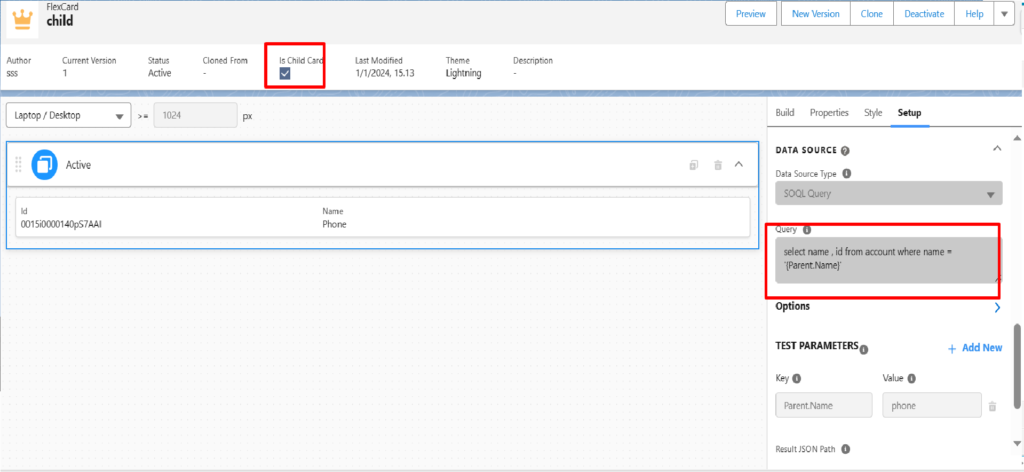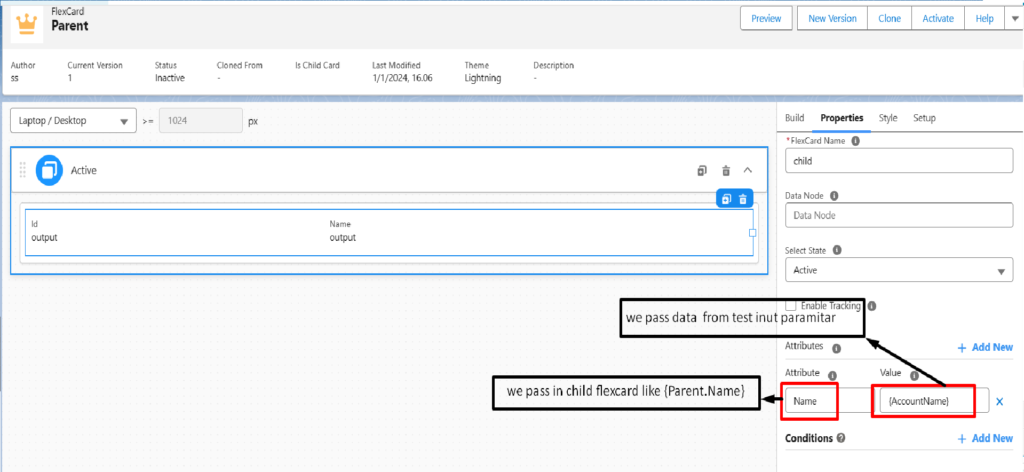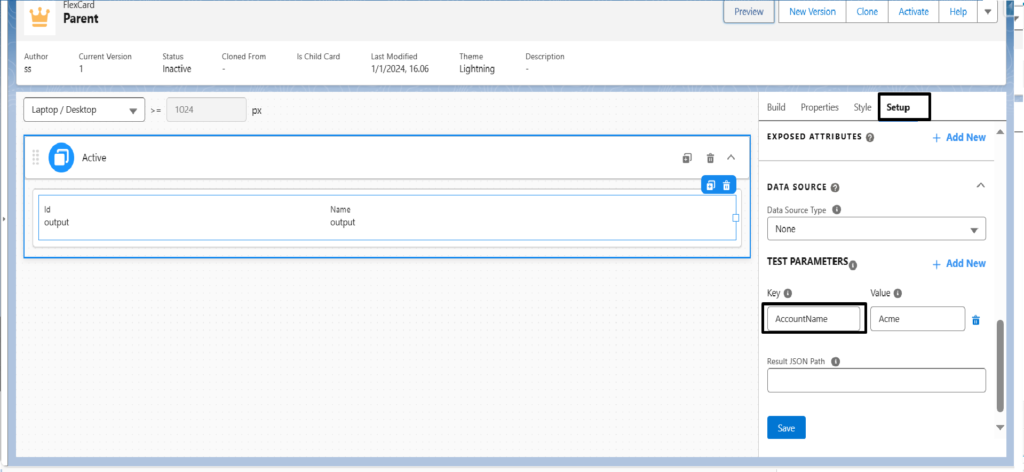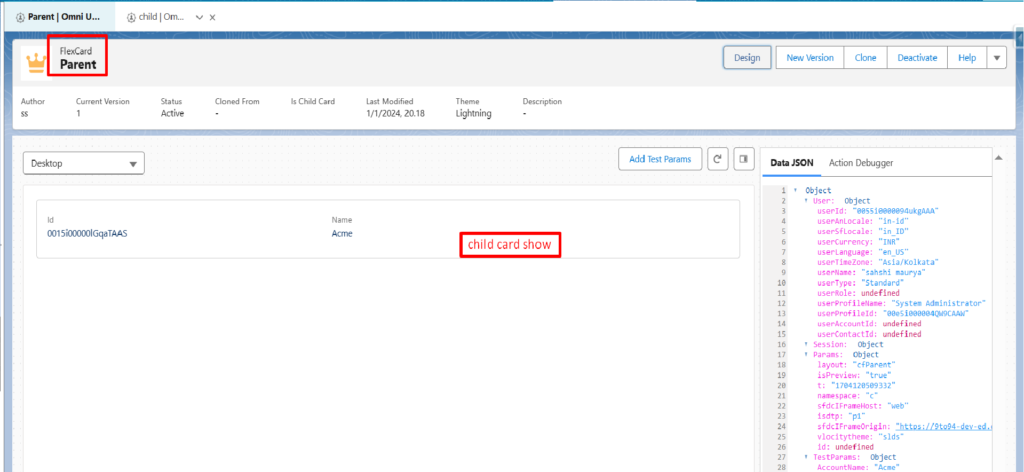In this post we create two flexcard first is parent flexcard and child flexcard . In child flexcard query account record and show data in parent flexcard.
Note: There are two ways to pass data to a child FlexCard in Vlocity:
Using Data Node:
- Data Nodes are utilized to query and pass data to child FlexCards. They allow you to fetch specific data from Salesforce and provide it to the child FlexCard for display or processing.
Using Attributes:
- Attributes serve as parameters that can be passed to a child FlexCard. They enable dynamic customization by allowing you to pass values directly to the child FlexCard.
- we can pass specified values in child flexcard from parent flexcard.
Step 1: Creating a Child FlexCard with a Query for Account Data:
- In this step, a child FlexCard is configured to query account data. This involves defining the necessary Data Nodes or Attributes to fetch and pass the relevant information to the child FlexCard.
Step 2: Configuring Child Card in Parent FlexCard:
Make
Is Child Card= true:- Set the property “Is Child Card” to true for the FlexCard that you want to designate as a child. This configuration is essential to establish the parent-child relationship.
Accessing Parent Node in Child FlexCard:
- To access data from the parent FlexCard in the child FlexCard, use the syntax: {Parent.attributeName}. Replace
attributeNamewith the specific attribute or data node you want to reference from the parent.
- To access data from the parent FlexCard in the child FlexCard, use the syntax: {Parent.attributeName}. Replace
In Parent FlexCard, Drag a Child Card onto the Canvas:
- In the parent FlexCard configuration, add a CHILD CARD component to the canvas. This component represents the child FlexCard within the parent FlexCard.





Pingback: How to use Flexcard Context Variables (salesforce / vlocity)